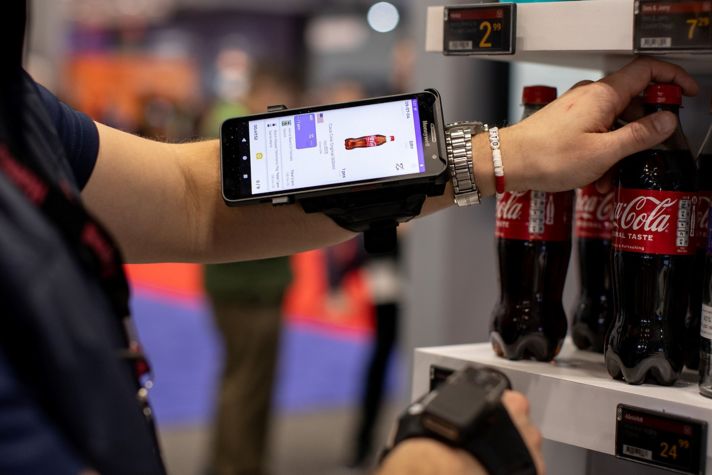Honeywell Mobility Edge vs Zebra Commitment to Android OS Versions
Today, security and lifecycle are critical points of discussion when enterprises consider the investment and acquisition of ruggedized mobile devices. Companies expect devices to provide a strong return of investment with 4-6 years of use, be able to easily transition from one Android OS version to the next, and receive all the latest security updates for Android OS to guard against the ever-increasing cybersecurity threat landscape.
Companies are asking questions such as:
- What is the expected lifecycle of my ruggedized mobile device in the enterprise? What may limit lifecycle?
- How does security play into the lifecycle of ruggedized mobile devices?
- How do I manage cybersecurity even though devices are not connected to the Internet?
- Why does cybersecurity matter even though devices don’t have sensitive data on them?
- How do cybercriminals hack into our enterprise system and what are the risks?
- What is the security and Android version strategy for the enterprise? Do we have one?
- What is the security and Android version strategy of the ruggedized device manufacturer?
- How long will the ruggedized mobile devices receive future Android versions?
- How forward compatible are the devices and why does that matter?
- Will the devices receive current Android OS updates for the lifecycle of the device?
In this article, we are going to take a closer look at some of these questions. We will explore some of the differences between the Android OS strategy of Honeywell Mobility Edge and other devices, and what that means to you from a lifecycle and security standpoint.
Honeywell Mobility Edge Commitment to Android OS Versions vs Others
Honeywell’s Mobility Edge is a unified hardware and software platform for all form factors. It allows for rapid deployments, enhanced performance, and adaptability to changing needs. With Mobility Edge, a one-time investment in setup, deployment, and provisioning is reusable across all device types.
Every Mobility Edge device receives every Android OS version for as long as we can guarantee, which is currently through Android 11, and Honeywell is committed to continue working toward version compatibility for Android 12 and 13. Honeywell and Google recommend their customers maintain the latest OS version on all devices. Devices that are not committed to receiving OS version upgrades well into the future, DO NOT meet the requirements of companies that follow security best practices.
When Honeywell completes the engineering effort to create and validate a current Android OS image for one device, this means we have done it for virtually all of the Mobility Edge platform family of devices. This makes it extremely easy for our customers who normally have more than one type of device in their mobile device fleet to upgrade to the next Android version.
Honeywell is able to make this commitment because of the SOM platform approach. SOM is a stabilized, locked down, certified integration of software, memory, Wi-Fi, Bluetooth, WAN, NFC, CPU, and more on a single module. Honeywell is the leader in utilizing a SOM approach in ruggedized mobile computers.
- SOM has enabled Honeywell to have a single software and hardware set across all devices. Without this, software maintenance and upgrades are more expensive. (Compare the price of Honeywell Android maintenance to others.)
When Honeywell first stated that Honeywell Mobility Edge devices are guaranteed through Android 11, competitors claimed that such a guarantee wasn’t real, and that they were in the same boat as Honeywell. They later specified that some of their devices would be compatible through Android 11. This made it appear to some that Zebra devices are equivalent to the Honeywell Mobility Edge devices.
However, when you look under the hood, competitor devices are not the same as Mobility Edge. All Honeywell Mobility Edge devices have the Honeywell SOM platform and a single firmware image. Honeywell, through its Mobility Edge platform, has a history of unbroken OS version continuity, guarantees each OS version through Android 11, and does so using a single software image.
Non-Mobility Edge Devices Skip Android OS Versions
Now let’s look at the difference between Honeywell Mobility Edge and competitor devices and their commitment to Android OS versions. For this example, we will focus on devices used in retail and warehouse applications.
Honeywell Mobility Edge Retail Example. The Honeywell CT40 family, which makes up the first four lines in the graphic below was first launched on Android 7/N. A few years later, Honeywell introduced a newer version called the CT40XP on Android 9/P.
Even though Honeywell introduced new hardware, we continue to provide Android versions and updates for the older CT40, which are still available for purchase. As a Mobility Edge device, CT40 will potentially be available through 7 Android Versions (7/N through 13) with NO gaps and is guaranteed through at least Android 11. The same forward compatibility is true for the CT60/CT60XP.
Competitor Retail Mobility Example. Now let’s look at Zebra devices from Zebra’s retail offerings that are referenced in the graphic below. According to Zebra’s product descriptions available online, there are multiple Android version gaps across the portfolio. This presents the user with a limited lifecycle, and by forcing users to rely on backporting, creates a heightened security risk.
Security patch backporting is not the same as Android version updates. Backporting is essentially taking parts of newer version of a software system or software component and porting them to an older version of the same software, where available. It is used for fixing existing security feature issues in older software versions. Patches and backports often do not contain all the security that is included in new Android versions, and therefore, users are left with devices lacking the best-available security.
For example, the Zebra TC57 launched on Android 8/O. Android 9 is released, but is not available to download1 for the TC57. As a result, companies have to rely on backporting for the TC57. This places an unnecessary burden on companies to either compromise on security, take on unnecessary risk, or retire devices long before their true lifecycle is complete, limiting the device return on investment.
Honeywell Mobility Edge Warehouse Example. The Honeywell CK65 family first launched on Android 8/O. Honeywell later introduced an updated version of CK65 on Android 9/P. Even though Honeywell introduced new hardware, we continue to provide Android version and updates for the older CK65, which is still available for purchase. As a Mobility Edge device, CK65 will potentially be available through 7 Android Versions (7/N through 13) with NO gaps and is guaranteed through at least Android 11.
Zebra Warehouse Example. The Zebra MC3300 follows a similar pattern as discussed in the retail example. The Zebra MC3300 is available for two Android versions1 , with the latest being Android 8/O. This presents the user with a limited lifecycle, and by forcing users to rely on backporting, creates a heightened security risk.
Zebra recently introduced the MC3300x on Android 10. Again, this means that if a company is using the Zebra MC3300 and wants a device that has Android 9/P or later, they need to purchase another device. This places an unnecessary burden on companies to consider retiring devices long before their true lifecycle is complete. If devices are kept in use, then the enterprise is faced with the security risks that are inherent with backporting.
Android Lifecycle and Security Matters
When enterprises consider the acquisition of ruggedized handheld barcode scanner or other Android devices, lifecycle and security are critical aspects of the decision. Devices that are not capable of receiving OS version upgrades well into the future, DO NOT allow companies to adhere to security best practices.
If you purchase a device that isn’t going to receive the latest OS version each and every year over the device’s life, you will be forced to security patch backporting.
Some mobile devices OEMs refer to their backporting practices as security updates. These backporting practices, marketed as security updates, come with hidden issues that enterprises need to understand.
- New OS features not available for backporting. New security features included in new OS versions are not made available to backport to earlier OS versions.
- Incomplete security patching. Vendors cannot guarantee that every vulnerability found in newer Android versions can and will be backported.
- Patches for processor vulnerabilities. Patches for proprietary low-level processor code must come from the chipset vendor and may not be made available for older OS versions.
- Lack of new security features. Customers relying on older Android versions can't take advantage of all the security, privacy, or productivity features added to newer versions.
As an enterprise, you are left with two options once your device reaches its limit of supported Android versions:
- Rely on old inferior security with known vulnerabilities
- Purchase new devices compatible with latest OS versions
Are those acceptable options when you consider the expected lifecycle and security that are needed for today’s ruggedized devices and cybersecurity landscape?
Honeywell Mobility Edge is a leader in Android version support, providing the best available security to our customers. Mobility Edge has guaranteed support through Android 11 and is committed to working towards Android 12 and 13 compatibility. Honeywell is deeply committed to the longevity and quality of the Mobility Edge platform. The following products are built on the Mobility Edge platform: Honeywell CT40, CT40XP, CT60, CT60XP, CN80, CK65, RT10A, VM1A, and VM3A.
Contact a Honeywell Solutions Expert today! Call 1-800-934-3163.
1Source: Zebra OS version availability/delivery is found on individual product software download pages
2Source: Zebra Product Spec Sheets found on individual product landing pages
Android and Google are trademarks or registered trademarks of Google LLC. All other marks are property of their respective owners.
Article Updated October 24, 2020








